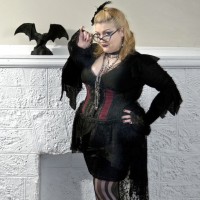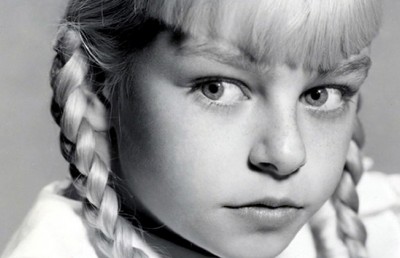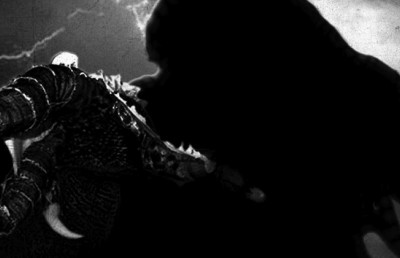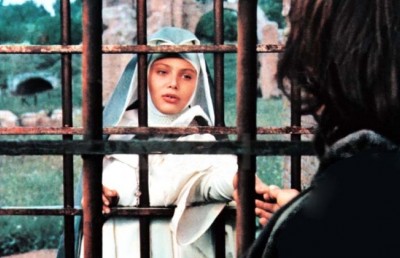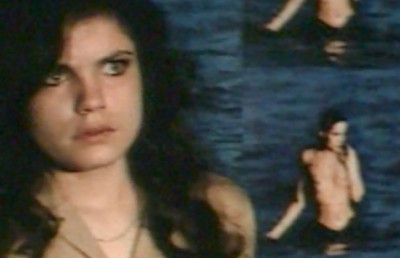Film, Fear and the Female
An Empirical Study of the Female Horror Fan
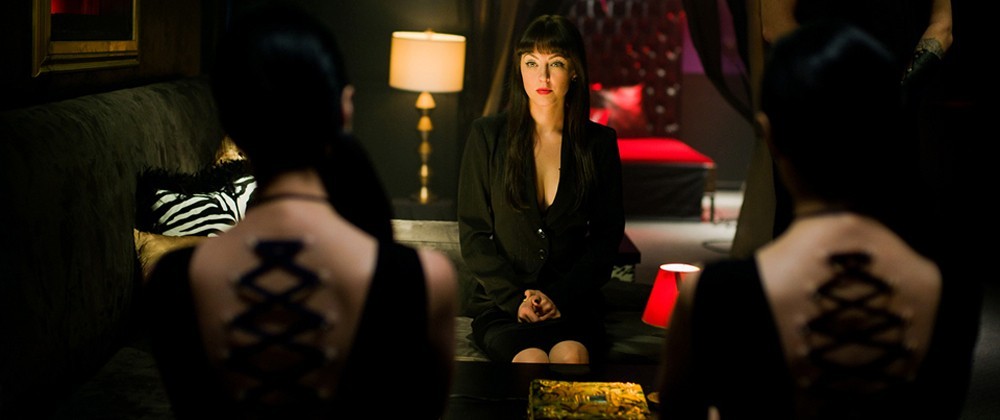
Theoretical discourse centring on horror film spectatorship privileges the male gaze and consequently, the male spectator. There have been extensive investigations into the horror film spectator and the psychological implications of his cinematic preferences. However, these studies identify the typical horror spectator as a young, heterosexual male and frequently neglect the female horror spectator. Some theorists dismiss horror films as low-brow, anti-woman 1 entertainment dependent on cheap, visceral thrills. However, many feminist theorists have spoken in defense of the horror genre, offering re-evaluations and psychoanalytical approaches to the study of the effects of horror. Barbara Creed’s 2 key theory of the monstrous feminine offers such an analysis. Centring on the male spectator, Creed has written about the effects of horror as well as symbolic representations of monstrosity in film. Despite an overtly feminist reading of the horror genre offered by Creed, her analyses are based solely upon the assumption that males are the primary consumers of horror films.
Background
It would seem that many theorists believe that horror is not for women. 3 When confronted with the question of why women express displeasure with the horror genre, many possible explanations arise. James Twitchell 4 and Miriam Hansen 5 suggest that the genre is misogynist and therefore, the female spectator is forced into a masochistic role. Hansen believes viewers oscillate between sadistic and masochistic pleasure. For the female spectator to experience any pleasure from Hollywood films, Laura Mulvey 6 postulates that women may take one of two stances, often vacillating between the two. The first, as mentioned by Twitchell and Hansen, is the role of a passive, masochistic viewer. The masochistic viewer’s perspective allows the spectator to identify with the onscreen female and her suffering. However, the female viewer may choose to adopt the male gaze and thereby, succumb to a degree of transvestism. 7 Rather than becoming the victim of the gaze, the female viewer may adopt and accept the male gaze. Linda Williams 8 considers the female spectator to be a passive entity, one which refuses to return the male gaze and thus, refuses to look. Williams identifies several factors which cause the woman to look away, including a lack of identifiable onscreen representation and the female spectator’s inability to bear witness to violence and degradation perpetuated upon women. These claims support the pervasive myth that women do not derive pleasure from horror film spectatorship.
Justin M. Nolan and Gery W. Ryan’s 9 empirical study of “slasher” film imagery and its differing effects on men and women found that female viewers more frequently indulge in the “gothic horror” subgenre characterized by internalized or domestic horror. Women expressed a fear of the intimate horror film in which the fearsome entities dwell inside the home (or inside a character). In addition, women were more fearful of films depicting bodily possession and the occult. Nolan and Ryan support these findings with sociological and criminal statistics. Women are more often the victim of violence at the hand of a spouse, family member or otherwise familiar party. Therefore, it is logical that women find incidents of violence in the family home to be more frightening and personally threatening than their male viewer counterparts.
Brigid Cherry 10 conducted a study of female spectators to examine their responses, viewing practices and personal experiences with the horror genre. When asked to rank their favourite types of horror films, Cherry found “vampire films” and “psychological thrillers” to be the most popular subgenres for female spectators. On the other hand, “slasher horror”, “horror parody” and “serial killer films” ranked lowest in popularity. Cherry found that women prefer atmospheric and psychological horror. Mary Ann Doane 11 refers to the gothic horror and atmospheric ghost horror as the “paranoid woman’s film”. It is a long-standing societal belief that women prefer these types of horror (in film and literature) above all other subgenres. 12
The aforementioned empirical studies of female horror spectators offer some insight into the psychological motivations behind horror spectatorship in women. However, they further substantiate the notion that women who do enjoy horror are specifically drawn to certain thematic qualities. The domestic horror films, particularly those with supernatural properties, would appear to be favoured by the female viewers. Conversely, women seem to be less drawn to visceral horror and gore. These findings are subject to temporal limitations. In recent years alone, the horror industry has grown by leaps and bounds. Perhaps, the female horror fan has evolved along with the genre. The goal of this study was to dispel misconceptions about the female horror spectator and investigate under which conditions female horror fandom may flourish. The present study sought evidence to support the claim that women, of all ages, may be fans of the horror genre. Additionally, these fans may be drawn to specific thematic elements above others. Finally, this study examined the relationship between visual pleasure and onscreen depictions of graphic violence.
Methods
Utilizing a sample of twenty-two, self-identified female horror fans, the present study investigated their thematic preferences, viewing practices and personal responses to horror film imagery. The study was conducted by recruiting participants from various locations utilizing a variety of means, including social media platforms and on-campus advertisements. After circulating information regarding the study, a sample of twenty-two women was finalized. With the assistance of Dr. Aalya Ahmad and Dr. André Loiselle, both of Carleton University, a questionnaire was designed with a selection of inquiries intended to cover a wide range of topics, from early interest in the horror genre to the role of fandom in the participants’ interpersonal relationships. Participants were asked about viewing practices, frequency of involvement in fan events and their responses to onscreen representations of women in the horror genre. Additionally, they were asked about their reactions to graphic violence. The advantage to the questionnaire method of analysis is the capacity for collecting a large quantity of data over a short period of time. However, the very nature of such data collection does not allow for an in-depth investigation of all amassed information. Therefore, the present study sought to place emphasis on the most prevalent and significant findings. All responses were encoded into quantitative data for ease of analysis.
Findings
This study included 22 participants and it was exclusively completed by females living in and around the Ottawa area. The participants ranged in age from 18 to 58, with a mean age of 33. For categorical purposes, the participants were divided into three age groups: Age Group A for participants ranging in age from 18 to 25, Age Group B for participants ranging in age from 26 to 35, Age Group C which includes participants ranging in age from 36 to 60, with a mean age of 48 (see Table 1-A ).
Table 1-A: Age Groups

Participants were asked to outline their thematic preferences in relation to horror films. Generally speaking, participants favoured supernatural and psychological horror films to gory slasher or monster movies. Nineteen of the participants listed psychological horror as a preference, rendering this category the most popular and universally favoured. Other popular categories were Serial Killer films (n= 16), Supernatural Horror (n= 15), Ghost films (n= 12) and Zombie Horror (n= 12). The least popular categories included Exploitation Horror (n=7), Werewolf Films (n= 5) and Rape-Revenge Horror (n= 3, see Table 2-A ).
Table 2-A: Preferred Subgenres

The participants were asked to report their level of comfort with graphic violence. Nine participants find graphic violence enjoyable, seven consider themselves to be “very” comfortable with graphic violence and six participants stated that they were “somewhat” comfortable. Of the 22 participants, no one stated that they were “not at all” comfortable with graphic violence.
Results
The findings of this study offer many unique insights into the psyche of the female horror fan. As predicted, female spectators enjoy horror to the same extent as male fans, possibly even surpassing male spectators’ enjoyment. Females who actively seek out horror have strong opinions about the genre and the generic representations of women. Given the extensive quantity of data produced by this study, it would be impossible to analyze all of the results for the present project. Therefore, this analysis and discussion will focus on the results as they support and contrast the aforementioned literature. Of particular interest to this analysis of these findings is the female spectator’s response to visceral imagery and graphic violence. The female horror fans indicated high levels of comfort with graphic violence. Thematically speaking, certain subgenres were found to be popular with female fans, some of which contrast the findings of Cherry, Nolan, Ryan and Doane. Specifically, the “serial killer” subgenre was highly popular with this sample of female horror fans. The subgenre has not been traditionally considered appealing to the female spectator.
Age Groups
There is an underlying assumption that horror is a genre favoured by young, heterosexual males. This study provides excellent support for the hypothesis that there is a large and growing community of female horror fans. In addition, this study contradicts the presumption that horror is a genre consumed mainly by young viewers. Participants ranged in ages from 18 to 58, indicating that women of all ages may have an interest in the genre. Given the available information, there appears to be a greater incidence of young female horror fans specifically between the ages of twenty and thirty (see Table 1-A ). A second category of “older” fans also appears, though it is less populated than the first, younger category. One can speculate on several explanations for these findings, such as the prevalence and inundation of horror in the 1950s and the genre’s revival in the 1980s. For a wonderful investigation into the history and evolution of the horror film, see Kevin Heffernan’s book Ghouls, Gimmicks and Gold . 13
Subgenres and Themes
The studies done by Nolan, Ryan and Cherry address the subgenres and thematic qualities of horror as they relate to the female spectator. Nolan and Ryan focus solely on “slasher horror” and did not question female fans, opting instead for typical viewers. Cherry examined female spectators and asked which types of horror films held greatest appeal for the female viewers. Both found that women prefer domesticated, internalized and gothic horror. Additionally, both studies found that female viewers are drawn to supernatural horror and experience displeasure when viewing gore and onscreen violence.
The present study conducted a similar evaluation. Participants were given a check-list of horror themes and subgenres with instructions to choose all applicable answers. By far, the most popular type of horror film was “Psychological Horror”, with eighty-three percent of respondents choosing this subgenre. The second most popular type was “Serial Killer Horror” with seventy-three percent choosing this category, “Supernatural Horror” coming in third with sixty-eight percent. Tying for fourth place chosen by fifty-five percent of the respondents were “Ghost Stories” and “Zombie Horror”. The least popular types of horror were “Exploitation Horror” popular with thirty-two percent of the women, “Werewolf Films” favoured by twenty-three percent and “Rape Revenge” chosen only by three participants, making up fourteen percent of the sample.
These findings differ slightly from the findings of previous studies. Nolan and Ryan found that women were drawn to domestic, internalized horror. This often manifests in “Gothic Horror”, but can be evident in horror involving the supernatural, the occult and psychopathology. Therefore, the results of this study somewhat support the findings of Nolan and Ryan. However, occult and possession films were only chosen by forty-one percent. More popular than occult and possessions films were zombie films, slasher films and science fiction horror, among others. These subgenres are not typical of internalized, domestic horror. In fact, zombie films and slasher films represent an external threat to the external body — a threat allegedly associated with the male spectator. Therefore, it is possible that a gendered reading of external and internal threats in horror may not be a reliable means of analysis.
Serial Killers and Psychological Horror
In Brigid Cherry’s sample, the least popular types of horror were “slasher films”, “horror parody” and “serial killer horror”. For both Cherry and the present study, female participants chose “Psychological Horror” as their favourite type of horror film. However, the present study found the second most popular choice to be “Serial Killer” films, which rank lowest in Cherry’s study. Cherry did not seek out female horror fans; rather, her results are based upon the preferences of standard, female-identifying, cinema-attending viewers. Therefore, it is possible that female horror fans are more comfortable with horror and therefore, are unperturbed by the inherent gore of the serial killer film. Additionally, true crime television shows and books are often popular with women. There seems to be a dark fascination with the psychopath in the female population. However, Cherry did not find this to be true.
The unexpected popularity of the serial killer film with female fans is a particularly interesting finding. Women are drawn to a compelling narrative and serial killer films depict mysteries that must be solved in order to stop the killers. The mystery may be somewhat superficial (the identity of the killer is revealed) or convolutedly complex (the origin of the killer is revealed and through the understanding of his origin, he may be stopped). Female viewers are more engaged with films which required a deeper, psychological investment. 14
I am reminded of the popularity of a certain television channel called “Investigation Discovery”. This channel features programs related to the exploration of serial killers and murderers throughout history. Some stories focus on love-related crimes ( Wicked Attraction ), some are gender-defined ( Deadly Women ) and some are straight-forward true crime investigations ( True Crime with Aphrodite Jones ). While the infancy of this channel reflects the lack of literature regarding its popularity and spectatorship statistics, I have personally witnessed different responses to the channel. My mother, an avid horror-film buff and serial-killer enthusiast, 15 spends many hours watching this channel. When I visit, I watch with her, enjoying the mix of factual information and dramatic re-enactments. On the other hand, my mother’s partner despises the channel and prefers not to watch the programming. During a discussion with several female friends who also enjoy horror, I was surprised to find that these women were not only familiar with Investigation Discovery , but they were also fans of the television channel. Additionally, the advertisements played during commercials breaks on this channel reflect their target demographic. Ads for laundry detergent, cleaning products, department stores, beauty products (particularly, “anti-aging” cosmetics) and “miracle product” infomercials dominate commercial breaks. Finally, many of the programs are narrated or hosted by female personalities. As mentioned, there is no literature yet available of the demographics of the channel’s spectators. However, given the aforementioned information, it would seem that this channel’s target audience is women. Women appear to have a morbid interest in true crime and serial killer films.
Mystery and Violence
Why do women enjoy gore-heavy, serial killer films but not slasher films? There is surmounting evidence that women are not fond of the slasher horror genre. 16 By comparing these gross-out, gore-filled films to the haunting, cerebral “woman’s horror”, one may discern how the slasher fails to engage the female spectator. Cherry discusses the woman’s intellectual attraction to certain genres and subgenres of films. Mulvey talks about the “male gaze” and how Hollywood forces the male’s perspective on the viewer, regardless of genre. Cherry hypothesizes that certain films construct and present the “female gaze” and these films are immensely popular with female viewers. In regards to horror, women are drawn to “gothic horror” because it is told from a relatable perspective and does not reinforce the male gaze. Nöel Carroll 17 suggests that horror is similar to Greek tragedy. It is not the suffering of horror, nor the tragic outcome of Greek tragedy that is appealing to the spectator, especially the female. Carroll suggests that women are drawn to an enigma. When the film posits a mystery that must be solved in order to determine the murderer, to unmask the killer, to stop the monster, the female spectator is more interested in the solving of the riddle, rather than the means to an end. This theory is supported by the findings of Zillman and Weaver, 18 who discovered that women prefer to watch films in which characters master the horror. Alternatively, males are more interested in seeing the suffering and brutality of the horror. This theory is further supported by Rhona Berenstein in her investigation of early horror reception and marketing. Berenstein states that early female horror fans were thought to be the same individuals who enjoyed detective stories and radio mysteries.
Therefore, the lack of intrigue inherent in many slasher films is bound to leave female horror fans feeling dissatisfied. These films showcase half-naked women, panicked over a masked murderer, who wields a phallic weapon and appears imbued with some form of immortality. The films frequently indulge the male gaze, pausing to objectify an attractive woman’s partially-nude body moments before her grisly death. There seems to be little attraction for the intelligent, astute female viewer. The female spectator has been called passive 19 and given the situation, she is understandably so. When there is no mystery, no relatable characters and no pleasurable gaze for the female viewer, she will fail to engage with the narrative. While to previous theorists, it may have appeared that the female spectator was merely disinterested in the horror genre, it is possible that her disinterest stemmed from an inability to find a relatable, onscreen representation of femininity.
Another unexpected finding centres on the female horror fan’s comfort with graphic violence. In the studies previously mentioned, female horror spectators are characterized by their preference for atmospheric horror incorporating minimal violence or completely devoid of gore. However, the present study found that all of the female horror fans were comfortable with graphic violence to some extent. In fact, many of the women admitted to enjoying gore and experiencing pleasure from viewing onscreen violence. If female horror fans enjoy graphic violence, but dislike slasher and exploitation horror, one may conclude that it isn’t the violent nature of these films that women find distasteful. Instead, women may be more apt to enjoy gore and violence when employed in conjunction with cerebral horror and intellectually stimulating narratives.
Discussion
There exists a new subgenre of horror which has begun to emerge — a hybrid of cerebral (or psychological) horror and the slasher film. 20 These films are frequently popular with women, despite their incorporation of visceral imagery and onscreen violence. These films stand as evidence that it is not the content of slasher films that make them unappealing to female fans. Instead, it was the employment of thematic tactics which were considered questionable. The lack of a female gaze apparent in many slasher films may disqualify the female fan from entirely engaging in the narrative. This new subgenre, to which I shall refer as cerebral gore, often purposefully subverts the male gaze or satirically employs it as commentary on its undesirability. The films may be written, directed or produced by women, usually starring women and often marketed to women (as well as men). The films tend to indulge in a borderline-excessive use of gore and violence, but in a more stylized and artistic 21 manner. In fact, the films themselves tend to be highly stylized, formally sophisticated and artistically appealing.
Most importantly, these films are informed by a generic, intertextual history. The females creating these films are horror fans and enthusiasts: they watched Marion Crane shower, went to prom with Carrie, were concerned for Rosemary’s unborn baby, and witnessed Stretch’s chainsaw dance. These are women who have come to re-evaluate their place in the horror genre, or lack thereof, and chose to carve out their own subgenre to call home. These are women who can speak and listen to fans because they too have indulged in fandom. Finally, these are women who support one another and want to see the horror genre flourish and grow with a new generation of female horror fans.
The new subgenre of female horror seeks to combine the popular slasher subgenre with the cerebral, psychological film. These films are aesthetically pleasing and reflect women’s presence in, and preference for, high-brow art, culture and aesthetics. 22 However, these films are also visceral and gory, reflecting a desire to re-appropriate abject depictions of gore for the female audience. The films make social commentary on gender and sexuality, by pushing boundaries and encouraging novel approaches to gender representations. Intended to appeal to intellect and subvert the male gaze, these films allow for an increased probability that the female viewer will identify and relate to the onscreen women. This new subgenre is breaking ground and taking important steps toward redefining the horror genre. Since this new subgenre is only just beginning to emerge, further research and assessment must follow.
The present study supports the evolution of the horror genre and demonstrates how female horror fans are reclaiming the genre in novel ways. The literature examined for this study constructs a characterization of horror fandom as a male pursuit which purposefully and violently rejects the feminine influence. Drawing on cultural assumptions that women are incapable of deriving pleasure from horror films, previous literature neglected the female horror viewer (and particularly, the female horror fan) and dismissed her as an unlikely aberration, unworthy of examination, if existing at all. The present study (along with work by Cherry and Berenstein) offers conclusive evidence that women not only enjoy horror, but some are so drawn to the genre that they inundate themselves with the aspects of the genre including filmic texts, critical literature, fan-oriented events and groups and the collections of films, memorabilia and trivia regarding their favourite titles.
Conclusion
The most persistent and persuasive models of horror film spectatorship neglect the female viewer. To better understand the female horror spectator, studies should focus on analyzing the preferences and responses given by females who enjoy the genre — the female horror fan. There are female spectators who do love horror and whose preference for this genre have unfortunately never been rigorously studied. The female horror fan is an under-represented concept in theoretical discourses on horror film spectatorship. Fandom tends to be considered a male pursuit and female horror fans are infrequently referred to, if mentioned at all. However, there is a vast and growing community of female horror fans. These fans run websites, edit fan magazines and engage in intellectual discourses regarding their preferences and interpretations of horror films. Some of them work in the film industry, directing, acting and producing in horror films. Like other avenues of fandom, female horror fans value expertise and trivial knowledge of the genre, often pursuing and seeking out rare and independent films and filmmakers.
Understanding the complexities of the female horror fan will be a long and extensive process. Future research should delve deeper into the psychological motivations of the female horror fan. This study was unable to draw a distinct line between the pleasures of horror, the fear evoked by horror and how the two affective experiences differ for female viewers. If the horror fan becomes desensitized to the gory and horrific imagery, do they still enjoy the genre and on what levels? There may be a relation between fear and fandom. This area is worthy of examination. Furthermore, future research should comparatively examine female fandom and male fandom. In addition to the fact that the majority of the literature regarding horror fan spectatorship centres on the male viewer, it is likely that many of these studies are out of date and would benefit from new assessments. The horror genre has received extensive attention in academia in the past. However, the focus must shift from a content analysis of the filmic text to an assessment of the realm of horror fandom and women’s changing role in the genre. By analyzing themes and subgenres of horror, one can speculate on how and why fandom is established and sustained for the female spectator. Additionally, by shedding light on the under-exposed realm of female horror fandom, generalizations can be made about the future of the horror genre and women’s changing role in the horror film industry.
Bibliography
Berenstein, Rhona. “Horror for Sale: The Marketing and Reception of Classic Horror Cinema.” Attack of the Leading Ladies: Gender, Sexuality and Spectatorship in Classic Horror Cinema . New York: Columbia University Press, 1996. 60-77.
Carroll, Nöel. Philosophy of Horror or, Paradoxes of the Heart . New York: Routledge, 1990.
Cherry, Brigid. Horror . Oxon: Routledge, 2009.
Cherry, Brigid. “Refusing to Refuse to Look: Female Viewers of the Horror Film.” Identifying Hollywood’s Audiences . Ed. Melvyn Stokes and Richard Maltby. London: BFI Publishing, 1999. 187-203.
Clover, Carol J. Men, Women and Chainsaws: Gender in the Modern Horror Film . Princeton: Princeton University Press, 1992.
Creed, Barbara. The Monstrous Feminine: Film, Feminism and Psychoanalysis . Oxon: Routledge, 1993.
Doane, Mary Ann. The Desire to Desire: The Woman’s Horror of the 1940s . Indiana: Indiana University Press, 1987.
Freeland, Cynthia. The Naked and the Undead: Evil and the Appeal of Horror , Colorado: Westview Press, 2000.
Hanson, Miriam. “Pleasure, Ambivalence, Identification: Valentino and Female Spectatorship.” Stardom: Industry of Desire . Ed. Christine Gledhill. London: Routledge, 1991.
Heffernan, Kevin. Ghouls, Gimmicks and Gold: Horror Films and the American Movie Business, 1953-1968 . North Carolina: Duke University Press, 2004.
Mayne, Judith. Cinema and Spectatorship . London: Routledge, 1993.
Mayne, Judith. Women at the Keyhole . Bloomington: Indiana University Press, 1990.
Mulvey, Laura. “Afterthoughts on ‘Visual Pleasure in Narrative Cinema’ Inspired by King Vidor’s Duel in the Sun (1946).” Framework , 15-17 (1981). 12 -15.
Mulvey, Laura. “Visual Pleasure and Narrative Cinema.” Screen , 16.3 (1975).
Nolan, Justin M. and Ryan, Gery W. “Fear and Loathing at the Cineplex: Gender Differences in Descriptions and Preferences of Slasher Films.” Sex Roles 42.1/2 (2000): 39-56.
Sedgwick, Eve Kosofsky. Epistemology of the Closet . Los Angeles: University of California Press, 1990.
Twitchell, James B. Dreadful Pleasures: An Anatomy of Modern Horror . USA: Oxford University Press, 1985.
Twitchell, James B. “ Frankenstein and the Anatomy of Horror” Georgia Review , 37/1 (Spring 1983): 41-78.
Williams, Linda. “Learning to Scream.” Sight and Sound, 15/XXX , (1995): 14-17.
Williams, Linda. “When the Woman Looks”, Re-Vision . Eds. Mary Ann Doane, Patricia Mellencamp and Linda Williams. Los Angeles: American Film Institute, 83-99.
Zillman, Dolf and Weaver, James B. “Gender-Socialization Theory of Reactions to Horror.” Horror Films: Current Research on Audience Preferences and Reactions . Eds. James B. Weaver and Ron Tamborini. New Jersey: Lawrence Erlbaum Associates, 1996. 81-102.
Notes
- Cynthia Freeland, The Naked and the Undead: Evil and the Appeal of Horror . (Colorado: Westview Press, 2000). ↩
- Barbara Creed, The Monstrous Feminine: Film, Feminism and Psychoanalysis . (Oxon: Routledge, 1993). ↩
- This is made evident by her absence in theoretical discourses centring on horror film fandom and spectatorship. Absence as presence, as conceptualized by Eve Kosofsky Sedgwick, suggests that the absence of something can allude to its presence, without acknowledgement. The lack of scholarly research in the field of female horror spectatorship suggests that theorists do not consider the topic worthy of critical discourse. Most fail to mention the female horror fan at all, and often, if she is mentioned, it is with negative connotations. For example, Judith Mayne (1990, 1993) has published extensively on female spectatorship, but completely neglects the horror genre. It is the absence of content, the refusal to acknowledge, that inspires suspicion and derived symbolic meaning. ↩
- James B. Twitchell, Dreadful Pleasures: An Anatomy of Modern Horror . (USA: Oxford University Press, 1985). ↩
- As described by Rhona Berenstein in Attack of the Leading Ladies , “I prefer Miriam Hansen’s conceptualization of spectatorship as an oscillation between sadistic and masochistic poles… spectatorship is a messy matter- slipping between identification and desire, between dominance and passitivity” (37). ↩
- Laura Mulvey, “Visual Pleasure and Narrative Cinema.” Screen , 16(3), 1975. ↩
- This is further elaborated upon by Rhona Berenstein who theorizes that the female spectator has a performative role in the horror film genre. For Berenstein, the female viewer may be masked and unmasked, likening the spectator’s experience to indulgence in “drag”, in that the performative nature of this role is unnatural. The female viewer may choose to observe the film from the male perspective, assuming the male gaze and its consequent effects. Conversely, the female viewer may instead exaggerate her “femininity” and succumb to the conventional, societal expectation that she will be too fearful to look at the onscreen horror. This reaction is both societally reinforced and socially encouraged. The female viewer may then rely upon the male viewer to be stoic and brave, communicating when the horrific scenes have concluded and when it may be safe again for her to cast her gaze upon the screen. ↩
- Linda Williams, “When the Woman Looks”, Re-Vision . Eds. Mary Ann Doane, Patricia Mellencamp and Linda Williams (Los Angeles: American Film Institute), 83-99. ↩
- Justin M. Nolan and Gery W. Ryan, “Fear and Loathing at the Cineplex: Gender Differences in Descriptions and Preferences of Slasher Films,” Sex Roles 42.1/2, (2000): 39-56. ↩
- Brigid Cherry, “Refusing to Refuse to Look: Female Viewers of the Horror Film,” Identifying Hollywood’s Audiences . Ed. Melvyn Stokes and Richard Maltby, (London: BFI Publishing, 1999). ↩
- Mary Ann Doane, The Desire to Desire: The Woman’s Horror of the 1940s (Indiana: Indiana University Press, 1987). ↩
- See Rhona Berenstein and James B. Twitchell. ↩
- Kevin Heffernan, Ghouls, Gimmicks and Gold: Horror Films and the American Movie Business, 1953-1968 , (North Carolina: Duke University Press, 2004). ↩
- Consider the popularity of the Psychological Horror subgenre and the preference for “Intelligent” female archetypes. ↩
- She completed her undergraduate studies in Psychology with the intent to pursue a career in Criminal Psychology. ↩
- See Cherry, Williams and Clover. ↩
- Nöel Carroll, Philosophy of Horror or, Paradoxes of the Heart , (New York: Routledge, 1990). ↩
- Dolf Zillman and James B. Weaver, “Gender-Socialization Theory of Reactions to Horror,” Horror Films: Current Research on Audience Preferences and Reactions . Eds. James B. Weaver and Ron Tamborini, (New Jersey: Lawrence Erlbaum Associates, 1996), 81-102. ↩
- See James B. Twitchell. ↩
- Some examples include Ginger Snaps (2000) and American Mary (2012). ↩
- The use of gore becomes inconsequential. The focus is upon the narrative and the character development of our heroines and/or monsters. When gore is used in excess, it is not intentionally repulsive, but rather a support for the narrative. ↩
- Participants in Cherry’s study expressed a preference for films of quality. Quality, as defined by Cherry and her respondents, is “high production values, in art direction, set design and costume… acting was frequently mentioned… however, the quality of a film was determined by plot and character development” (172). ↩

